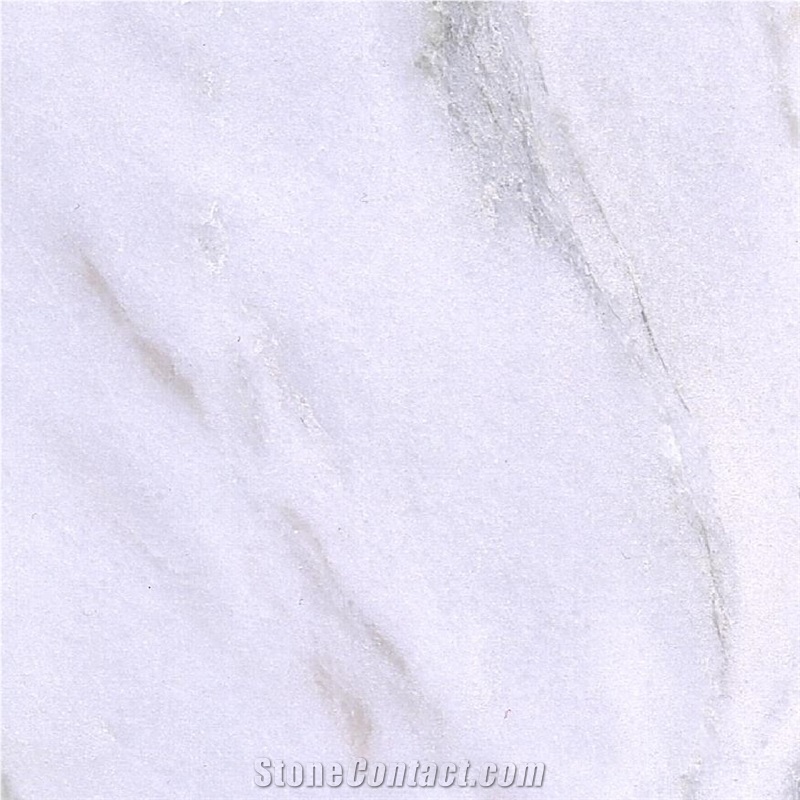Artemis Marble
 Greece
(Drama, Kavala, Northern Greece)
Greece
(Drama, Kavala, Northern Greece)
Kristallina Artemis Marble is a type of natural stone that is quarried in Greece, specifically in the area of Drama in Northern Greece. This marble is known for its unique appearance, which includes a white or light beige background with distinctive crystalline patterns that resemble snowflakes or flowers. The crystalline patterns are typically grey or brown in color and create a striking contrast with the lighter background. The surface of Kristallina Artemis marble is usually polished to a high shine, which enhances the natural beauty of the stone and gives it a smooth and glossy finish. The stone can also be honed for a more matte or satin-like appearance, or brushed for a textured surface. Overall, Greek Kristallina Artemis marble is a highly desirable material for interior and exterior design due to its distinctive appearance, durability, and versatility. It is often used in countertops, flooring, and wall cladding in a variety of residential and commercial projects. This elegant white marble is especially good for construction stone, ornamental stone, mosaic, pavers, stairs, fireplaces, sinks, balustrades, sculptures, countertops and other design projects. It also called Crystalline Artemis Marble, Balkan White Marble, Bianco Artemis Marble, Artemis White Marble,Drama White Marble, Kristallina Artemis Marble. Artemis Marble can be processed into Polished,Bush Hammered,Tumbled,Brushed,Honed,Split,Machine Cut,Natural Surface,Sandblasted,Acid Washing,Combed,Leathered,Water Jet,Filled,Chiseled,Pickling and so on.

What grade is Greece's Artemis Marble?

Can Greece's Artemis Marble be used in a kitchen?

Is Greece's Artemis Marble an expensive stone?

Can Greece's Artemis Marble be used exterior applications in very rainy climates?

What is the coefficient of friction of Pickled Greece's Artemis Marble tiles?

Can Greece's Artemis Marble be used indoors?

How thick is Greece's Artemis Marble slabs?

Can Greece's Artemis Marble be used in landscaping?

Are there color variations of Greece's Artemis Marble?
-

 Turkey
Turkey
 6YRDiamond members are premium members on platform, providing members with comprehensive approach to promoting their products, increasing products exposure and investment return to maximize.
6YRDiamond members are premium members on platform, providing members with comprehensive approach to promoting their products, increasing products exposure and investment return to maximize.
 Verified Supplier is for prove company authenticity,including business license,trade license and effective office space,to enhance buyers' trust to suppliers and their products, reducing communication costs.
Verified Supplier is for prove company authenticity,including business license,trade license and effective office space,to enhance buyers' trust to suppliers and their products, reducing communication costs.
Contact Supplier
-

QUANZHOU LINLEI IMP. & EXP.TRADING CO.,LTD.
 China
China
 6YRDiamond members are premium members on platform, providing members with comprehensive approach to promoting their products, increasing products exposure and investment return to maximize.
6YRDiamond members are premium members on platform, providing members with comprehensive approach to promoting their products, increasing products exposure and investment return to maximize.
 Verified Supplier is for prove company authenticity,including business license,trade license and effective office space,to enhance buyers' trust to suppliers and their products, reducing communication costs.
Verified Supplier is for prove company authenticity,including business license,trade license and effective office space,to enhance buyers' trust to suppliers and their products, reducing communication costs.
Contact Supplier
-

-

-

-

-

 India
India
 Verified Supplier is for prove company authenticity,including business license,trade license and effective office space,to enhance buyers' trust to suppliers and their products, reducing communication costs.
Verified Supplier is for prove company authenticity,including business license,trade license and effective office space,to enhance buyers' trust to suppliers and their products, reducing communication costs.
Contact Supplier
-

-

 Turkey
Turkey
 Verified Supplier is for prove company authenticity,including business license,trade license and effective office space,to enhance buyers' trust to suppliers and their products, reducing communication costs.
Verified Supplier is for prove company authenticity,including business license,trade license and effective office space,to enhance buyers' trust to suppliers and their products, reducing communication costs.
Contact Supplier
-

 China
China
Contact Supplier
The request includes: 1. surface finished, size 2. quantity required







 Australia
Australia Iran
Iran